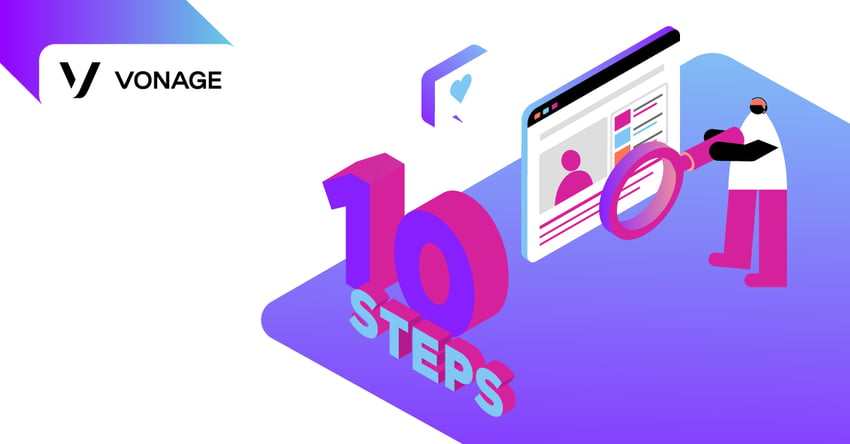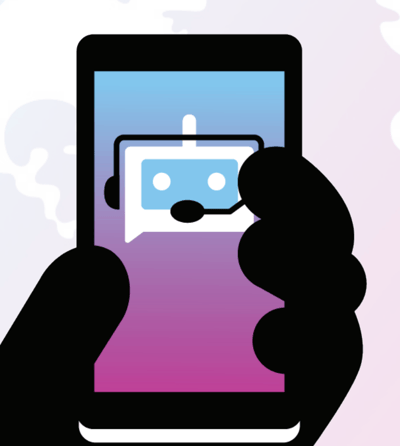A 10-Step Plan to Deliver a More Personalized Customer Service Experience
Personalized customer service is about treating people as individuals. In an age where customers can buy your products and services from almost anywhere in the world, this has become increasingly complex. Although there's no one-size-fits-all solution, the following 10-step plan provides a framework that will allow your contact center to adopt a more personalized approach to customer care.

What Is a Personalized Customer Experience?
Customers expect companies to understand their unique tastes and preferences and engage them as individuals rather than customer types or segments. A personalized customer experience makes this possible by delivering tailored messaging, offers, and products to each person. Companies can also show customers they value them by using their preferred channels, allowing them to move the conversation from one medium to another as needed, and connecting them with contact center agents who have precisely the expertise needed to answer their questions or resolve their problems.
According to research from McKinsey and Company, customers now view personalization as the default standard of engagement. Seventy-one percent of customers expect businesses to deliver personalized interactions, and 76 percent of them become frustrated when this doesn't happen. COVID-19 accelerated this trend, putting customer loyalty up for grabs. Three-quarters of consumers switched to a new store, product, or buying method during the pandemic. The pressure is clearly on for companies that have not yet adopted a personalized customer experience, but there's an opportunity for the ones that get it right. Companies that excel at personalization generate 40 percent more revenue from those activities than average players.
How Can You Provide Personalized Customer Service?
To make your service stand out, take a customer-centric approach. According to Zendesk's Customer Experience Trends Report 2021, customer service has to be more than fast and friendly — it has to be relevant and responsive to customers' unique preferences. One way to accomplish this is by offering omnichannel support that engages customers via their channels of choice. It's important to note that these channels may have changed in the past year. In 2020, 64 percent of customers used a new support channel, and 73 percent of them plan to keep using it.
Customers also increasingly prefer a conversational approach to engagement no matter what channel they use. This is partly due to the influence of messaging apps, which customers find convenient for keeping in touch with friends and family. Not only are messaging apps easy to use, but they're also intimate and familiar, creating the one-on-one interactions that customers seek. However, there are many other ways you can tailor the service experience.
 GLOBAL RESEARCH STUDY
GLOBAL RESEARCH STUDY
10-Step Plan to Deliver a More Personalized Customer Experience
Here's a checklist of 10 proven strategies to get you started:
1. Develop Customer Profiles
One of the most important parts of delivering personal customer service involves taking the time to understand who your customers are. Your company's marketing department should be able to supply demographic data and customer information. From there, sit down with your best service reps and discuss the types of customers they commonly deal with on a day-to-day basis. In combination, this process will allow you to flesh out a series of profiles based on your typical customer's needs, wants, and expectations.
2. Create a Customer-Focused Vision Statement
Defining your customer service principles in a vision statement provides a strategic reference point. The easiest way to create a customer-centric vision statement is by focusing on key expectations identified in your customer profiles. Once in place, every rep in your business should know the vision statement by heart. This way, its principles can act as guiding values for your entire service department.
3. Train Employees to Be Customer-Facing
Training customer-facing reps on how to deal with customer emotions is crucial to creating personal experiences. No customer wants to feel "processed," and how reps respond to someone who is angry or upset is crucial. In these situations, the last thing any customer wants to encounter is a robot-like agent taking their cues from a script.
4. Give Customers Choices
Customers don't think in terms of channels. In today's hyperconnected world, they expect to access customer service in the manner they find most convenient. It doesn't matter if it's talking face-to-face or by phone, email, social media, or live chat — customers expect your business to be there when they need you. If you're not providing an omnichannel service experience, your customers may switch to a competitor that does.
5. Develop a Self-Service Experience
Self-service provides information that customers can use to help themselves. In a service environment that's now defined by speed and convenience, self-service reduces frustration by allowing customers to find the answers they need quickly and easily. Suitable materials for self-service portals include FAQs, explainer videos, and step-by-step solutions for common problems.
6. Offer Support via Social Media
Social media has become key to multichannel initiatives because it provides a way to engage with and listen to people. As such, social channels provide a valuable source of information and insight that your business can use to personalize customer experiences.
7. Empower Your Sales and Service Reps With a Strong Customer Relations System
Customer relationship management (CRM) systems improve your service offerings in several powerful ways. For instance, CRM systems provide a suite of interactive voice response (IVR) options, plus real-time, customer-centric data, such as personal information and call and purchase history. As a result, a well-implemented CRM system can empower service reps to deliver more personalized greetings and responses.
8. Gather and Use Customer Feedback
Feedback harvesting is a great way to listen and learn from your customers. Creating a systematic approach to collecting feedback gives your business a unique opportunity to hear what your customers think you could be doing better. Used effectively, this means you can optimize your customer service to ensure it's as personalized as possible. A well-integrated CRM can also help you implement automated tools such as post-call IVR surveys that provide even more insightful feedback.
9. Seek Regular Employee Feedback
As the eyes and ears of any contact center, service agents are crucial to delivering personalized experiences. They're also the ones speaking to your customers every day, which means they'll be the first to notice trends that can help improve your customer service offerings. Providing platforms for them to contribute ideas and constructive feedback can therefore help stimulate small changes that make a massive difference.
10. Regularly Evaluate Your Service Offerings
As their needs and habits evolve, the customer profiles you develop will change. Consistently reviewing your customers' preferences and seeking feedback from every available source is the only way to ensure you keep offering a personalized experience. It's crucial to keep learning and building knowledge so the insight you glean can be used to develop increasingly personalized interactions with your customers.
Learn why seamless communications matter more to the customer experience than ever.
